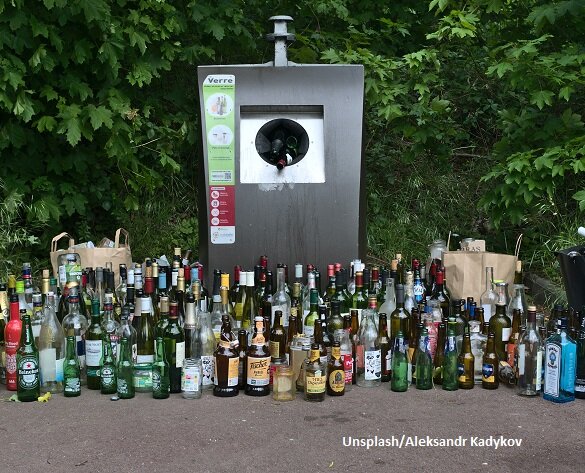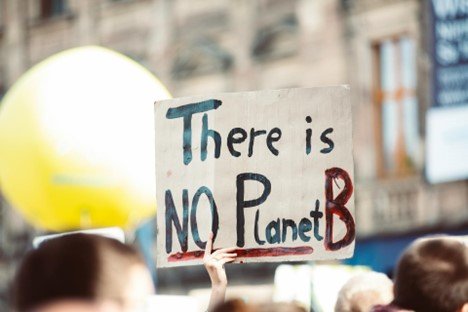Understanding the Impact of Recycled Glass on the Environment
/Guest post by Jessica Ellen
Glass is omnipresent. From cookware to buildings to packaging, its applications are manifold. While the hard, brittle substance has many benefits, it also has its fair share of drawbacks.
For example, it takes energy as well as natural resources like sand and lime to produce glass. If you have ever wondered — is glass biodegradable? — well the answer is no. That's why you need to recycle it as much as possible. This article shares information about the impact of recycled glass on the environment.
Recycled Glass Saves Energy
Glass requires energy for manufacturing. To make it, you need to heat ordinary sand and melt it before cooling it rapidly with lime and soda. In fact, this process of heating and cooling requires a tremendous amount of energy. And since this energy comes from burning either coal or electricity, the process amounts to a lot of consumption, and a significant environmental impact.
By recycling existing glass products, you can cut down the energy required to produce new glass. Glass is recycled by crushing it into tiny particles, called a cullet. Then it is heavily processed to make a new glass product. This method of creating new glass products from recycled glass saves 20-40% of energy on average. According to the US Environmental Protection Agency, recycling one bottle equals the energy required to keep a 110-watt bulb lit for four hours.
Saves Natural Resources
Along with energy, glass manufacturing also requires the consumption of natural resources. Two primary substances required are sand and limestone. Sand, which contains silicon dioxide, provides silica. And limestone, which contains calcium carbonate, supplies the lime.
These materials come from natural resources. As companies produce more and more glass, higher amounts of natural resources are depleted. Excessive use of sand leads to soil erosion. Coastal erosion is also a severe issue, that has been implicated in rising sea levels. The excessive mining of limestone has had similar effects on the environment.
By recycling, glass manufacturers no longer have to rely on natural resources. Instead, they can use the cullet to make brand new glass products.
Improves Air and Water Quality
It's a well known fact that the quality of air and water are degrading at a rapid pace in many parts of the world. Human activity is one of the primary reasons for this environmental crisis. Since manufacturing sand requires energy and natural resources, this process contributes to the degradation of air and water resources as well.
By recycling, companies save both energy and natural resources. The direct effect is reflected in the air quality. Fewer emissions means less pollution, and here is where recycling old glass can make a big impact: glass made from cullets can cut down air pollution by 20% and water pollution by 50%.
This reduction in pollution is beneficial not only to humans but also to animals and the ecosystem, so it's a win-win for all.
Reduces Landfill Space
All of the waste that humans produce, both industrial and domestic, ends up in landfills. Experts predict that the world will run out of landfill spaces soon. Equally alarming are the adverse effects that landfills are already having on the environment. They pollute the land and water and emit CO2, one of the primary greenhouse gases that are generated by human activity.
Once glass is dumped into a landfill, it can stay there for centuries and still not degrade. That's because processed glass is not degradable.
By limiting the amount of waste going into landfills, there will be a reduction in landfill space. Using less landfill space also leads to people developing an enhanced aesthetic value of the environment, bringing with it many additional positive benefits.
Recycling is Easier than Producing Glass
Glass recycling is sustainable for manufacturers as well. If you were to produce glass from scratch using raw materials, you're going to have to put in more effort than you would by recycling it.
Glass is typically made from liquid sand, which is the regular sand melted using excess heat. The heat required to melt sand is as high as 1700°C. It is then mixed with soda ash and limestone and processed to get a glass that can be used. Thus, making glass from regular sand is quite an arduous task.
On the other hand, recycling involves one less step. You have to collect the glass, crush it into cullets, and process it with soda ash and limestone using heat. If the collection of used glass is managed correctly, the only demanding task here is heating.
Recycling Glass Protects Marine Life and the Seafloor
Marine debris, which refers to the litter that ends up in seas and oceans, is a serious and growing environmental problem. The mismanaged garbage, namely garbage that is not collected and disposed of in landfills, makes its way into our oceans, and stays there forever.
According to a study published in Science journal in 2015, some 19 billion pounds of litter enter the oceans every year. Scientists have discovered debris like plastic, glass, and other forms of trash littering the ocean floor. These objects can cause serious harm to the marine ecosystem. You can protect the ocean floors by better managing your garbage. Since glass is 100% recyclable, you should make every possible effort to reuse and recycle it.
Recycling Glass has Economic Benefits
There are several economic benefits to recycling glass.
First of all, recycling glass costs less than creating glass from scratch. That's why cullets are always in demand among glass manufacturers.
Second, recycling generates more jobs, including jobs for people employed in projects related to recycling. The EPA currently estimates that recycling generates almost $236 billion in annual revenue.
Finally, there are government subsidies that benefit companies that recycle glass. You can access these subsidies for your business if you recycle glass instead of (just) manufacturing it.
How Can You Contribute to Recycling Glass?
Recycling glass doesn't have to be complicated. With the right decisions, you can recycle glass with relative ease. To get started, you must retain the glass items you use and store them separately. Pick varieties you can reuse at home and follow along: the ones you cannot recycle should be discarded appropriately in an industrial depot or wrapped carefully in plastic before disposal (so as not to injure trash handlers).
Collection agencies will sort through the garbage and collect the glass objects, but you must ensure they make it to these facilities. Discarding glass out in the open will prevent collection agencies from recycling the glass. Thus, each person has to be responsible when handling glass. It’s an easy way to contribute to the solution without creating additional problems.
Is glass biodegradable? No, it isn't. But it's undoubtedly recyclable. By recycling collectively, society will benefit in the ways mentioned above. So as much as possible, recycle your used glass!
Jessica Ellen is a writer and blogger. She has been contributing to high-authority blogs by sharing her experience and ideas about green living and related topics.
Like this? Please pin!










































